Your cart is currently empty!
Blog
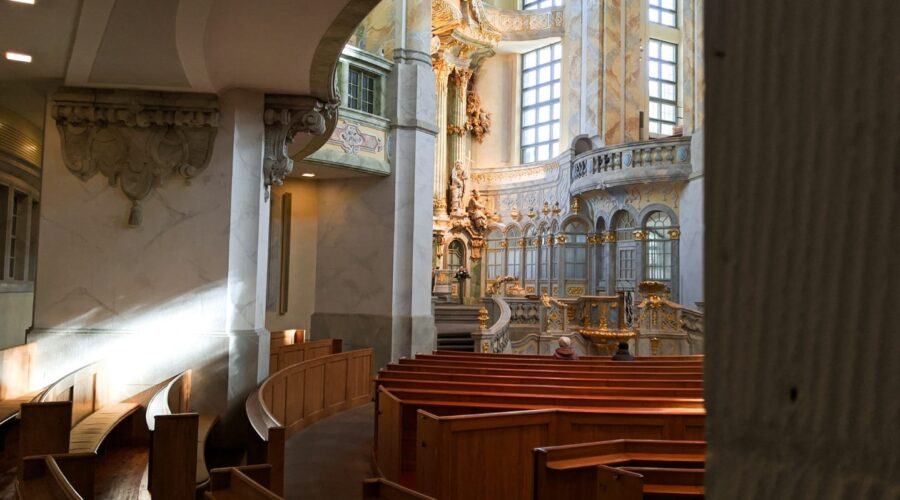
Calvary Church: A Comprehensive Guide for Spiritual Growth and Community
In a world full of distractions and uncertainty, Calvary Church stands as a beacon of hope, offering a vibrant and supportive Christian community where individuals can grow in their faith journey and forge meaningful connections. This guide delves into the history, mission, and key aspects of Calvary Church, providing a comprehensive overview for those seeking spiritual growth and community.
History of Calvary Church
- Founded in 1958 by Pastor Chuck Smith in Santa Ana, California
- Grew rapidly due to its emphasis on contemporary worship and relevant Bible teaching
- Established Calvary Chapel Association in 1965, which supports over 2,000 affiliated churches worldwide
Mission and Vision
Calvary Church’s mission is “to know Jesus Christ and to make Him known” through the following principles:
- Love God with all our heart, soul, mind, and strength
- Love others as ourselves
- Proclaim the Gospel to all nations
- Equip the saints for ministry
The church envisions a global community transformed by the power of the Holy Spirit, where individuals experience a deep connection with God and are empowered to live out their faith in practical ways.
Key Aspects of Calvary Church
Worship Services
Calvary Church offers dynamic and uplifting worship services that include:
- Contemporary Christian music
- Expository preaching from the Bible
- Prayer and intercession
Community and Fellowship
Calvary Church fosters a welcoming and supportive community through various programs and activities, such as:
- Small groups for Bible study and discipleship
- Fellowship events and social gatherings
- Outreach and mission initiatives
Outreach and Missions
Calvary Church is actively involved in reaching out to the community and supporting global missions. Its outreach initiatives include:
- Local food banks, homeless shelters, and community development projects
- Short-term mission trips to various countries
- Financial support to missionaries and humanitarian aid organizations
Leadership and Structure
Calvary Church is led by a team of elders who oversee the church’s spiritual and administrative functions. The church operates with a decentralized structure, empowering local leadership and congregational involvement.
Benefits of Joining Calvary Church
Spiritual Growth
- Access to in-depth Bible teaching and discipleship
- Opportunities for personal study and reflection
- Support and encouragement from a community of believers
Community and Connection
- Build meaningful relationships with like-minded individuals
- Participate in various community events and activities
- Find support and encouragement through small groups and fellowship
Outreach and Service
- Make a difference in the community and beyond
- Contribute to humanitarian aid and mission initiatives
- Live out the Gospel through practical acts of compassion
How to Get Involved with Calvary Church
If you’re interested in learning more or becoming a part of Calvary Church, there are several ways to get involved:
- Attend a worship service
- Visit the church website
- Call the church office
- Contact a member of the leadership team
Calvary Church Locations Location Address Contact Santa Ana, CA (Main Campus) 16300 East 17th Street, Santa Ana, CA 92705 (714) 545-2000 Irvine, CA 1 Spectrum Point Drive, Irvine, CA 92618 (949) 554-9100 Costa Mesa, CA 6555 Bristol Street, Costa Mesa, CA 92626 (949) 556-5100 Los Angeles, CA 1237 South Atlantic Boulevard, Monterey Park, CA 91754 (323) 726-2484 Las Vegas, NV 7600 West Warm Springs Road, Las Vegas, NV 89113 (702) 364-0800 Calvary Church offers a welcoming and inclusive environment where people from all walks of life can find spiritual guidance, community support, and opportunities to grow in their faith. Whether you’re seeking spiritual enrichment, meaningful relationships, or ways to make a positive impact on the world, Calvary Church provides a vibrant and transformative platform for your journey.
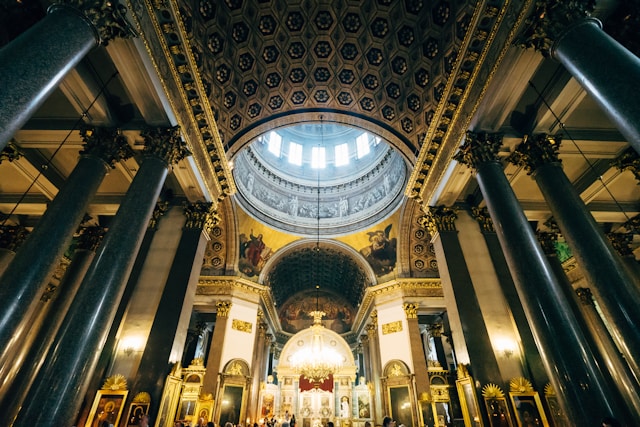
Discover the Fascinating History and Significance of St. Luke’s
Introduction
St. Luke, a prominent figure in the New Testament, played a pivotal role in spreading the Christian faith. As the author of the Gospel of Luke and the Book of Acts, he left an indelible mark on the development and understanding of Christianity. Here, we delve into the rich history, significance, and legacy of St. Luke, exploring his life, work, and the profound impact he had on the Christian world.
Life and Background
While the exact details of St. Luke’s life remain shrouded in some mystery, his writings provide valuable insights into his background and experiences.
Early Life and Education
- Born in Antioch, a bustling city in ancient Syria, Luke was a well-educated man.
- He was a physician by profession, a skill that greatly benefited his medical observations and descriptions in his writings.
Association with Paul
- Luke’s life took a profound turn when he encountered the Apostle Paul in Troas, Asia Minor.
- He became a close associate of Paul, accompanying him on his missionary journeys, sharing in his trials and triumphs.
- Luke’s eyewitness accounts of Paul’s ministry and travels form the basis of much of the Book of Acts.
Literary Contributions
St. Luke’s literary contributions to the New Testament are immense. His writings provide a comprehensive narrative of Jesus’ life, ministry, and the early Christian church.
Gospel of Luke
- The Gospel of Luke, addressed to Theophilus, is characterized by its detailed and orderly account of Jesus’ life and teachings.
- It emphasizes Jesus’ compassion, his ministry to the marginalized, and his universal love.
Book of Acts
- The Book of Acts is a continuation of Luke’s Gospel, narrating the spread of the Christian faith after Jesus’ resurrection.
- It chronicles the work of the apostles, the establishment of the early church, and the growth of Christianity throughout the Roman Empire.
Theology and Influence
St. Luke’s writings had a profound impact on the development of Christian theology and praxis.
Emphasis on Compassion and Inclusivity
- Luke’s writings highlight Jesus’ love for all people, regardless of their social status or background.
- His stories emphasize the importance of compassion, forgiveness, and acceptance.
Historical Accuracy and Detail
- Luke’s medical training and attention to detail are evident in his writings.
- He provides precise geographical information, chronological accounts, and vivid descriptions, enhancing the historical credibility of his narratives.
Veneration and Legacy
St. Luke’s influence extended beyond his lifetime, as he is revered as a saint in both the Catholic and Orthodox Christian traditions.
Patron Saint of Physicians and Artists
- Due to his profession as a physician, Luke is considered the patron saint of physicians and surgeons.
- He is also recognized as the patron saint of artists, as tradition holds that he painted several icons of the Virgin Mary.
Significance for Iconography
- St. Luke’s depictions in Christian iconography often portray him as a physician or holding a scroll, symbolizing his literary contributions.
- His written accounts have influenced the development of Christian art and iconography for centuries.
Conclusion
St. Luke’s life and writings have left an enduring legacy on Christianity. His Gospel and the Book of Acts provide a rich source of historical information, theological insights, and spiritual guidance. As the patron saint of physicians and artists, Luke’s spirit of compassion and his attention to detail continue to inspire and guide believers to this day. His contributions have shaped the very fabric of Christian faith, making him one of the most influential figures in the history of the church.
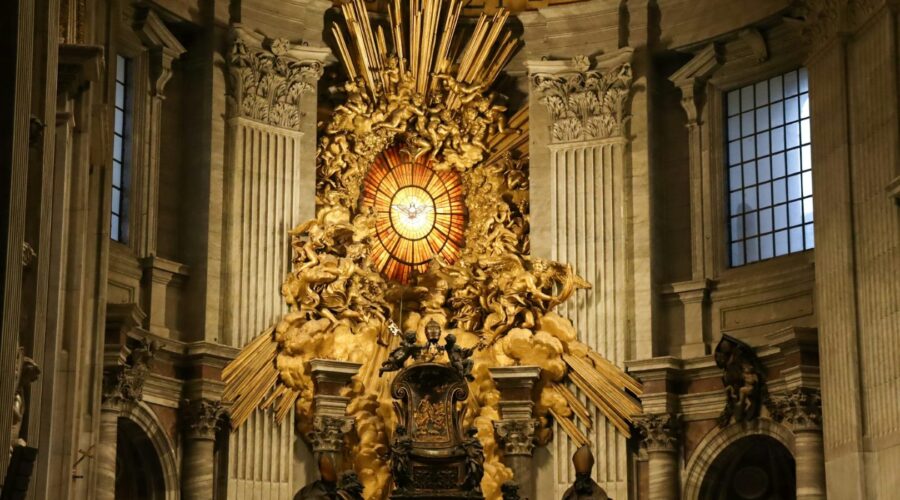
Lakewood Church Live: A Comprehensive Guide to The Houston Megachurch
About Lakewood Church
Lakewood Church is a non-denominational Protestant megachurch located in Houston, Texas. Founded in 1959 as a small storefront church, it has since grown into one of the largest and most influential churches in the United States.
The church is led by Pastor Joel Osteen, who took over from his father, John Osteen, in 1999. Osteen is known for his motivational and positive messages, which focus on personal growth, prosperity, and the power of faith.
Lakewood Church Live Services
Lakewood Church holds live services every Sunday at 8:30 AM, 11:00 AM, and 7:00 PM (CST). The services are broadcast live on television, radio, and the Internet, reaching an audience of millions worldwide.
The live services feature music, worship, and a message from Pastor Osteen. The worship team is known for its contemporary and energetic music, while Osteen’s messages are often practical and inspiring, offering hope and encouragement to the congregation.
Attending a Lakewood Church Live Service
If you are interested in attending a Lakewood Church live service, you can visit the church campus at 3700 Southwest Freeway, Houston, TX 77027.
Parking is available on-site, and the church provides shuttle services from various locations in the Houston area.
To avoid long lines, it is recommended to arrive at the church early. Doors open approximately 60 minutes before each service.
Lakewood Church Online
In addition to its live services, Lakewood Church also offers a variety of online resources, including:
- Live streaming of services
- On-demand sermons
- Bible studies
- Online giving
These resources make it easy to connect with Lakewood Church from anywhere in the world.
Lakewood Church Ministries
Lakewood Church is involved in a wide range of ministries, both locally and internationally. These ministries include:
- Community outreach programs
- Disaster relief
- Missionary work
- Youth programs
- Prison ministry
Through its ministries, Lakewood Church seeks to serve its community and make a difference in the world.
Lakewood Church Controversies
Like many large churches, Lakewood Church has been involved in some controversies over the years. These controversies have included:
- Financial practices
- Political involvement
- Doctrinal issues
However, despite these controversies, Lakewood Church continues to attract a large and loyal following.
Additional Information
For more information about Lakewood Church, please visit the church’s website at https://www.lakewoodchurch.com/.
Frequently Asked Questions
- What time are the live services?
Live services are held every Sunday at 8:30 AM, 11:00 AM, and 7:00 PM (CST). - Can I attend a live service online?
Yes, live services are streamed on the Lakewood Church website and YouTube channel. - What is the dress code for live services?
There is no specific dress code, but attendees are encouraged to dress respectfully. - Is childcare available?
Yes, childcare is available for children ages 6 months to 5 years.
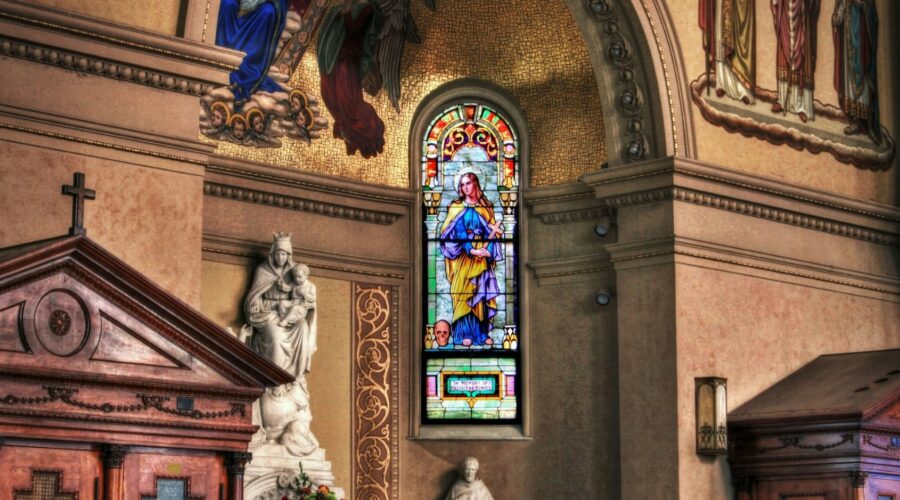
St. Francis of Assisi: A Saint of Peace, Nature, and Poverty
Introduction
St. Francis of Assisi, born Giovanni Francesco Bernardone in 1182, is one of the most beloved and influential saints in the history of Christianity. Known for his profound love of God, nature, and the poor, he founded the Franciscan Order and inspired countless others to follow in his footsteps.
Early Life and Conversion
Francis was born into a wealthy merchant family in Assisi, Italy. In his youth, he indulged in worldly pursuits and lived a carefree life. However, during a time of crisis, he experienced a profound conversion. After a vision of Jesus calling him to abandon his former life, Francis renounced his wealth and status and embraced a life of poverty and service.
Foundation of the Franciscan Order
In 1209, Francis gathered a group of like-minded followers and founded the Franciscan Order. The order, officially known as the Order of Friars Minor, emphasized poverty, humility, and service to the poor. Francis believed that by imitating the life of Jesus, his followers could bring God’s love and compassion to the world.
Love of Animals and Nature
Francis had a deep love for all living creatures. He preached that animals were God’s creatures and deserved to be treated with respect and kindness. The famous story of St. Francis preaching to the birds is a testament to his reverence for the natural world.
Poverty and Humility
Francis believed that poverty was essential for following Christ. He called on his followers to give up all material possessions and live in dependence on God’s providence. He saw humility as a virtue that helped people overcome pride and selfishness.
Stigmata and Miracles
In 1224, Francis received the stigmata, the wounds of Christ’s crucifixion, on his hands, feet, and side. This extraordinary event is believed to have been a sign of his deep union with Christ. Francis also performed numerous miracles, including healing the sick and raising the dead.
Later Life and Death
As Francis grew older, he faced increasing physical ailments. However, he continued to preach and inspire his followers. He died in 1226, at the age of 44. Francis was canonized two years later by Pope Gregory IX.
Legacy and Impact
St. Francis of Assisi left an enduring legacy that has inspired countless people throughout history. His emphasis on poverty, humility, and love of nature has influenced both religious and secular institutions. The Franciscan Order continues to thrive today, with millions of members worldwide.
Key Aspects of St. Francis’s Life and Teaching
- Love of God and Imitation of Christ
- Poverty and Reliance on Divine Providence
- Humility and Rejection of Pride
- Service to the Poor and Lepers
- Love of Animals and Respect for Nature
- Importance of Contemplation and Prayer
- Emphasis on Community and Brotherhood
- Call to Preach the Gospel to All
Prayer to St. Francis of Assisi
Lord, make me an instrument of your peace.
Where there is hatred, let me sow love;
Where there is injury, pardon;
Where there is doubt, faith;
Where there is despair, hope;
Where there is darkness, light;
Where there is sadness, joy.O Divine Master,
Grant that I may not so much seek to be consoled as to console;
To be understood as to understand;
To be loved as to love.
For it is in giving that we receive;
It is in pardoning that we are pardoned;
And it is in dying that we are born to eternal life.Links and Resources
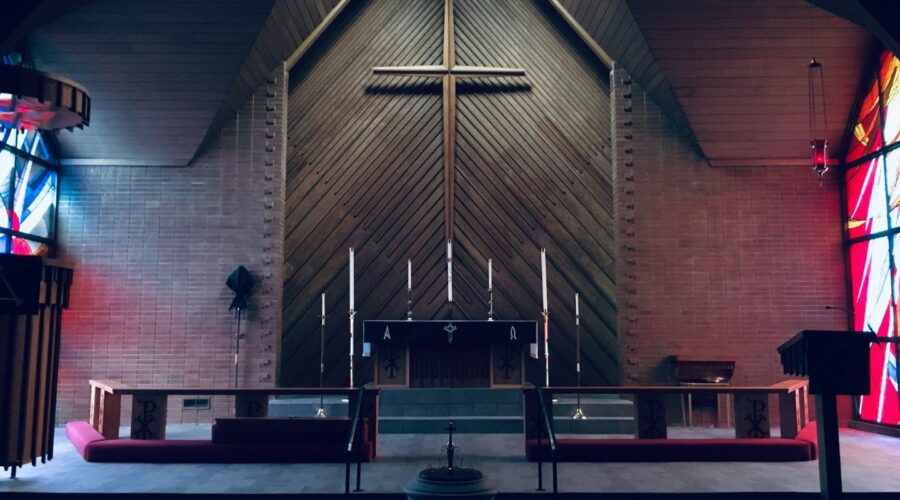
St. Benedict: A Guiding Light for Monks and Monasteries
Introduction
St. Benedict is the patron saint of Western monks and monasticism. He is best known for his “Rule of Benedict,” which sets out the principles and guidelines for monastic life. Benedict’s life and teachings have left an enduring legacy, shaping the development of Christianity and Western civilization.
Early Life and Conversion
Benedict was born in Nursia, Italy, around 480 AD. He came from a wealthy and influential family and received a Roman education. However, he eventually abandoned his worldly pursuits and embraced the monastic life. After a period of intense spiritual searching, Benedict settled in a cave at Subiaco, where he spent several years as a hermit.
Foundation of Montecassino
In 529 AD, Benedict founded his first monastery at Monte Cassino, which became the center of his monastic order. He established a strict set of rules for the monks, emphasizing obedience, humility, prayer, and work. The monastery became an important center of religious and cultural life in Europe.
Rule of Benedict
Benedict’s “Rule of Benedict” (also known as the Holy Rule) is a comprehensive guide for monastic life. It covers every aspect of the monk’s existence, from the daily routine to the spiritual exercises. The Rule emphasizes:
* Obedience: Monks must obey their abbot in all things that are not sinful.
* Humility: Monks must cultivate a spirit of humility and avoid pride and self-exaltation.
* Prayer: Monks must dedicate themselves to prayer and meditation, especially the Liturgy of the Hours.
* Work: Monks must engage in manual labor as well as intellectual pursuits.The Benedictine Order
The Benedictine Order, founded by Benedict, became one of the most influential monastic orders in the Western world. Benedictine monks played a crucial role in spreading Christianity throughout Europe, establishing monasteries, schools, and hospitals. The order has continued to grow and evolve over the centuries, and today there are thousands of Benedictine monasteries worldwide.
Benedictine Spirituality
Benedictine spirituality is characterized by its emphasis on:
* Stability: Monks remain in the same monastery for their entire lives.
* Conversion: Monks strive for constant conversion of heart and mind.
* Community: Monks live in a community of like-minded individuals.
* Liturgical Prayer: Monks give priority to the daily recitation of the Liturgy of the Hours and the celebration of the Eucharist.Legacy of St. Benedict
St. Benedict’s legacy has had a profound impact on Western civilization. His “Rule of Benedict” continues to guide monastic communities worldwide, providing a framework for a life of prayer, work, and community. Benedict’s teachings on humility, obedience, and stability have also influenced secular society, shaping values and ethical standards.
Conclusion
St. Benedict is a towering figure in the history of Christianity. His life and teachings have left a lasting legacy that continues to inspire monks, nuns, and lay people alike. His “Rule of Benedict” remains an essential guide for monastic life, and his principles of humility, obedience, and community continue to resonate in contemporary society.
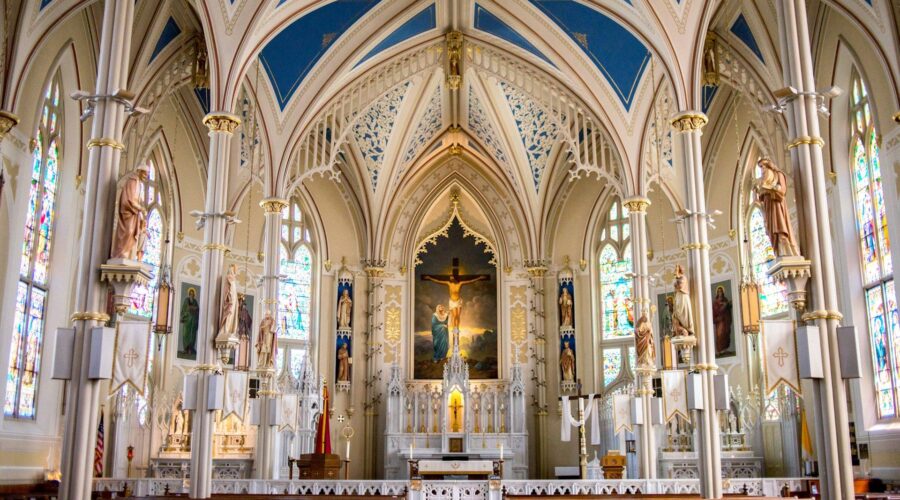
Women in the Bible: Their Significance, Roles, and Impact
Introduction
Throughout the vast tapestry of biblical history, women have played pivotal roles and left an indelible mark on the narrative. From the humble beginnings of Eve to the unwavering faith of Mary, women’s stories, strengths, and challenges resonate with readers across generations. This comprehensive exploration delves into the fascinating world of women in the Bible, highlighting their significance, diverse roles, and lasting impact.
Eve: The Origin
The story of Eve, the first woman created by God, holds immense symbolic and theological weight. As the companion and equal of Adam, Eve represents the inherent dignity and value of women. However, her disobedience in eating the forbidden fruit also serves as a cautionary tale about the consequences of human rebellion.
Women in Patriarchal Society
The biblical era was characterized by a patriarchal society, where men held primary authority and influence. Within this context, women faced numerous challenges and limitations. They were often seen as property or possessions, with limited autonomy and rights.
Despite these obstacles, many women in the Bible exhibited extraordinary resilience and agency. For example, Sarah, the wife of Abraham, played a pivotal role in the birth of Isaac, the promised heir. Rebekah, the wife of Isaac, used her cunning and determination to ensure the birthright for her younger son, Jacob.
Women in Leadership Roles
Although women were generally excluded from positions of formal leadership in biblical times, a few notable exceptions shine through. Deborah, a prophetess and judge, led the Israelites to victory against their oppressors. Ruth, a Moabite woman, became a devout follower of God and an ancestor of King David.
The New Testament also offers examples of women exercising leadership and influence within the early Christian church. Priscilla, a tentmaker and teacher, is described as a co-worker with her husband, Aquila. Phoebe, a deaconess, is commended for her service to the church in Rome.
Women as Mothers, Wives, and Widows
Throughout the Bible, women are frequently portrayed in the roles of mothers, wives, and widows. These passages highlight the importance of family and the challenges women faced in raising children, maintaining relationships, and coping with loss.
The story of Hannah, a barren woman who prayed for a child, is a poignant example of the desperation and joy that can accompany motherhood. Proverbs 31 offers a detailed description of a virtuous wife, emphasizing her industriousness, faithfulness, and support for her husband.
Women as Prophets, Teachers, and Healers
In addition to the roles mentioned above, women in the Bible also served as prophets, teachers, and healers. Miriam, Moses’ sister, was a prophetess who led the Israelites in worship. Huldah, a prophetess during King Josiah’s reign, played a pivotal role in the religious reform movement.
Women also played a vital role in teaching and mentoring others. The book of Proverbs extols the wisdom and instruction that mothers and wives can provide. Phoebe, mentioned earlier, is described as a “helper of many” and is likely to have played a teaching and pastoral role in the church.
Conclusion
The women in the Bible are more than just characters in a distant history. Their stories, roles, and experiences offer valuable lessons about faith, resilience, and the inherent dignity of all people. They remind us that women are essential partners in the Kingdom of God and have made significant contributions to the biblical narrative and its enduring legacy.
Understanding the diversity and significance of women in the Bible not only enriches our knowledge of the scriptures but also challenges us to value and empower women in our own lives and communities. As we continue to study and appreciate their contributions, may we be inspired by their examples and strive to create a world where all women are treated with respect, dignity, and equality.
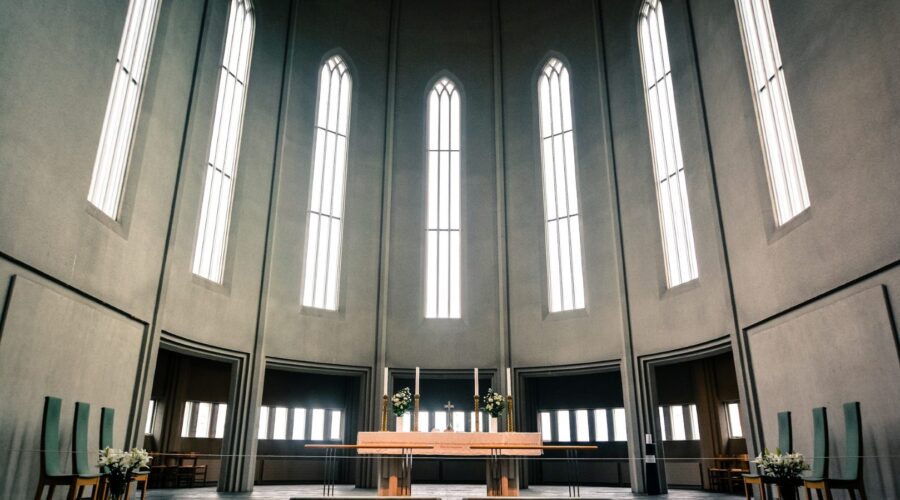
Baptist Church: A Comprehensive Guide
Introduction
Baptist churches are a branch of Protestantism that emphasize the autonomy of the local congregation and the priesthood of all believers. Baptists believe that the Bible is the sole authority for faith and practice and that each individual has the right to interpret Scripture for themselves. As a result, Baptists have a long history of religious freedom and tolerance.
History of Baptist Churches
The Baptist movement began in England in the early 17th century. The first Baptist church was founded in London in 1612 by John Smyth. Smyth and his followers believed that the Church of England was too corrupt and that true believers should separate from it. They also rejected the idea of infant baptism, arguing that only those who had made a personal decision to follow Christ should be baptized.
The Baptist movement quickly spread to America. The first Baptist church in the New World was founded in Providence, Rhode Island, in 1638. Baptists played a major role in the American Revolution, and they were among the first religious groups to support the separation of church and state.
Baptist Beliefs and Practices
Baptists believe that the Bible is the sole authority for faith and practice. They reject the idea of creeds or confessions and believe that each individual has the right to interpret Scripture for themselves.
Baptists emphasize the autonomy of the local congregation. Each congregation is self-governing and makes its own decisions about its worship, ministry, and outreach. Baptists also believe in the priesthood of all believers, meaning that all Christians have the right to participate in the ministry of the church.
Baptists practice believer’s baptism by immersion. They believe that baptism is a symbol of the believer’s death to sin and resurrection to new life in Christ.
Different Types of Baptist Churches
There are many different types of Baptist churches. Some of the most common include:
- Regular Baptist Churches: These churches are typically more conservative and traditional. They emphasize the authority of the Bible and the importance of personal holiness.
- Free Will Baptist Churches: These churches believe that people have the free will to choose whether or not to follow Christ. They also emphasize the importance of evangelism and missions.
- Southern Baptist Churches: These churches are the largest Baptist denomination in the United States. They are known for their strong emphasis on missions and evangelism.
- American Baptist Churches: These churches are more liberal than other Baptist denominations. They are open to a wider range of theological views and emphasize the importance of social justice.
Baptist Churches Today
Today, there are over 40 million Baptists worldwide. Baptists are found in every country in the world, and they represent a wide range of theological and political views. However, they are all united by their belief in the Bible, the autonomy of the local congregation, and the priesthood of all believers.
Tips for Finding a Baptist Church
If you are looking for a Baptist church, there are a few things you can do to find one that is right for you.
- Visit different churches: Attend worship services at different Baptist churches to get a feel for their worship style, preaching, and community.
- Talk to the pastor: Get to know the pastor of the church you are considering joining. Ask them about their beliefs, their vision for the church, and their plans for the future.
- Read the church’s statement of faith: This will give you a good understanding of the church’s beliefs and values.
- Get involved in the church: The best way to get to know a church is to get involved. Attend Bible studies, Sunday school, and other church activities.
Conclusion
Baptist churches are a diverse and vibrant part of the Christian landscape. They offer a wide range of worship styles, theological views, and community outreach programs. If you are looking for a church that is centered on the Bible, emphasizes the autonomy of the local congregation, and believes in the priesthood of all believers, then a Baptist church may be right for you.
Frequently Asked Questions
- What is the difference between a Baptist church and other Christian churches?
- What are the different types of Baptist churches?
- How can I find a Baptist church?
Baptist churches are distinguished by their emphasis on the autonomy of the local congregation, the priesthood of all believers, and believer’s baptism by immersion.
There are many different types of Baptist churches, including Regular Baptist Churches, Free Will Baptist Churches, Southern Baptist Churches, and American Baptist Churches.
You can find a Baptist church by visiting different churches, talking to the pastor, reading the church’s statement of faith, and getting involved in the church.
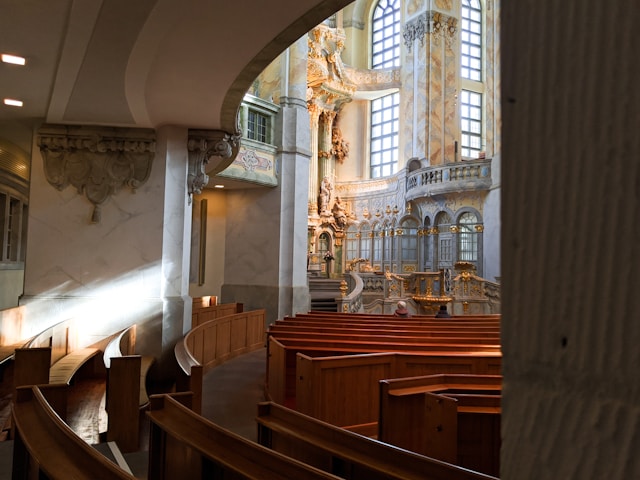
Unveiling the Southern Baptist Convention: A Comprehensive Guide
Introduction
The Southern Baptist Convention (SBC) is the largest Protestant denomination in the United States, boasting over 13 million members in over 47,000 churches. Founded in 1845, the SBC has played an influential role in American religious and political life, and continues to be a significant force today.
History and Beliefs
Formation and Early History
The SBC was formed in response to theological disputes over slavery, missions, and the role of centralized authority within the Baptist tradition. Conservative Baptists, who opposed the influence of liberal denominations like the American Baptist Foreign Mission Society, sought to establish an independent organization that adhered to their fundamentalist beliefs.
Core Beliefs
The SBC’s beliefs are rooted in the Bible, which it considers to be the infallible Word of God. The denomination affirms the sovereignty of God, the sinfulness of humanity, the need for personal salvation through faith in Jesus Christ, and the importance of evangelism and missions.
Organization and Structure
Leadership and Governance
The SBC is governed by a decentralized system of representative government. Delegates from each local church form the Convention, which meets annually to elect officers, adopt resolutions, and conduct business. The Convention’s president holds a largely ceremonial role, while the Executive Committee serves as the denomination’s primary governing body.
Affiliated Organizations
The SBC supports a wide range of affiliated organizations, including:
* International Mission Board (IMB): Responsible for missions and evangelism outside the United States.
* North American Mission Board (NAMB): Focuses on church planting, evangelism, and ministry within the United States.
* LifeWay Christian Resources: Provides educational materials, resources, and publishing services to churches and individuals.
* Ethics & Religious Liberty Commission (ERLC): Advocates for religious freedom and promotes biblical ethical values in society.Controversies and Challenges
Biblical Inerrancy and Creationism
The SBC has faced criticism for its strong stance on biblical inerrancy and the literal interpretation of the creation account in Genesis. This has led to debates within the denomination over the role of science and the compatibility of faith with modern scientific theories.
Sexual Abuse Crisis
In recent years, the SBC has been rocked by a sexual abuse crisis, with allegations of misconduct and cover-ups involving pastors and church leaders. The denomination has taken steps to address this crisis, including creating a database of credibly accused ministers and adopting a resolution to strengthen accountability and victim support.
Political Involvement
The SBC has a long history of political involvement, particularly in conservative causes. The denomination has endorsed Republican candidates and advocated for policies such as anti-abortion legislation and school choice. This political involvement has sometimes drawn criticism from those who argue that the church should remain separate from politics.
Current Status and Trends
Membership and Church Planting
While the SBC has seen a slight decline in membership in recent years, it remains a major force in American religion. The denomination continues to prioritize church planting, particularly in underserved areas, as a way to reach new believers and expand its influence.
Diversity and Inclusion
The SBC has faced increasing calls for greater diversity and inclusion within its ranks. The denomination has made efforts to reach out to minority churches and has adopted resolutions affirming the value of racial and ethnic diversity in the church.
Ecumenical Relationships
The SBC has traditionally maintained a somewhat isolationist stance towards other denominations, but it has recently begun to engage more actively in ecumenical dialogue and cooperation. It has established partnerships with other evangelical organizations and participated in joint initiatives with mainline Protestant denominations.
Conclusion
The Southern Baptist Convention remains a complex and influential religious organization, playing a significant role in American society. While it has faced challenges and controversies along the way, the SBC continues to adapt and evolve, seeking to fulfill its mission of proclaiming the gospel and making disciples. As it navigates the complexities of the 21st century, the SBC will undoubtedly continue to shape the religious and cultural landscape of the United States.
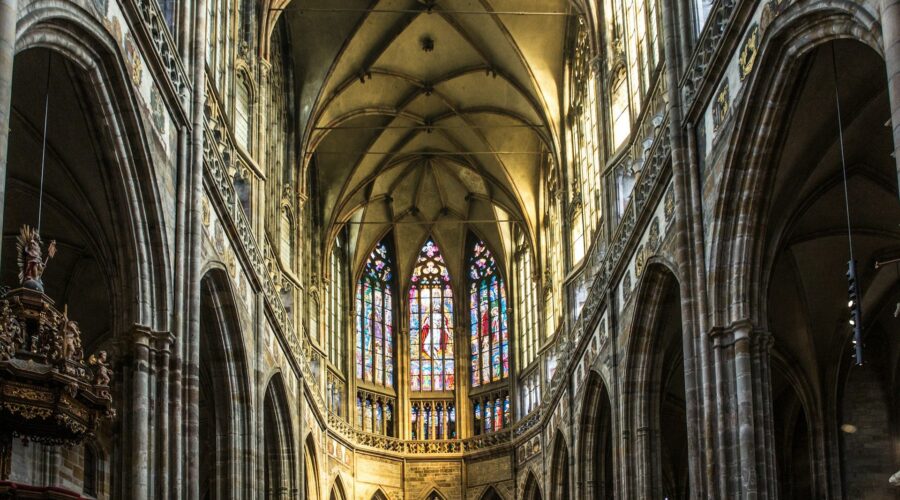
Unlocking the Riches of Catholic Daily Readings: A Comprehensive Guide
Introduction
Daily readings, a cornerstone of Catholic spirituality, provide an unparalleled opportunity for believers to engage with Scripture, deepen their faith, and grow closer to God. This comprehensive guide will delve into every aspect of Catholic daily readings, empowering you to navigate this rich tradition and reap its spiritual benefits.
The Liturgical Calendar
Overview
The liturgical calendar, a roadmap for the Church year, guides the selection of daily readings. Each day is associated with a particular theme, feast, or commemoration, shaping the readings chosen for that day.
Chronological and Temporal Cycles
- Chronological Cycle: Readings from the Old Testament, Psalms, and New Testament are read in a three-year rotation.
- Temporal Cycle: Readings focus on the life, ministry, and teachings of Jesus, organized into liturgical seasons such as Advent, Christmas, Lent, and Easter.
The Lectionary
Definition and Structure
The Lectionary is the official collection of Scripture readings used in Catholic liturgies. It is divided into three volumes:
- Volume I: Daily Mass readings for Sundays and weekdays.
- Volume II: Readings for Holy Week, Easter, and other special occasions.
- Volume III: Readings for the Liturgy of the Hours.
Components of a Reading
Each reading in the Lectionary typically includes the following components:
- Introduction: A brief summary of the reading, its historical or literary context.
- Scripture Text: The actual passage of Scripture to be read.
- Responsorial Psalm: A psalm or hymn response to the reading.
- Gospel Acclamation: A short phrase or sentence used before the reading of the Gospel.
Reading the Daily Mass Readings
Preparation
To fully appreciate the daily readings at Mass, it is advisable to:
- Arrive at church a few minutes early.
- Open the Lectionary or use a Missal to follow the readings.
- Listen attentively and pause to reflect on the words.
Meditative Reading
Beyond the Mass context, daily readings can be a source of personal meditation. Consider the following tips:
- Choose a quiet time and place for reading.
- Read slowly and prayerfully.
- Reflect on the words, asking yourself what God may be revealing to you.
Additional Resources
Universalis: Catholic Bible: Provides access to the complete Catholic Bible and Lectionary readings.
EWTN Daily Readings: Offers online access to the daily readings from the Lectionary.
The Lectionary: Provides information about the history, structure, and use of the Lectionary.
Conclusion
Catholic daily readings are a rich treasure, offering believers a transformative journey through Scripture. By understanding the liturgical calendar, the Lectionary, and the practice of meditative reading, you can unlock the spiritual depths of these readings and deepen your relationship with God. May the daily readings guide your faith, inspire your actions, and lead you ever closer to Christ.
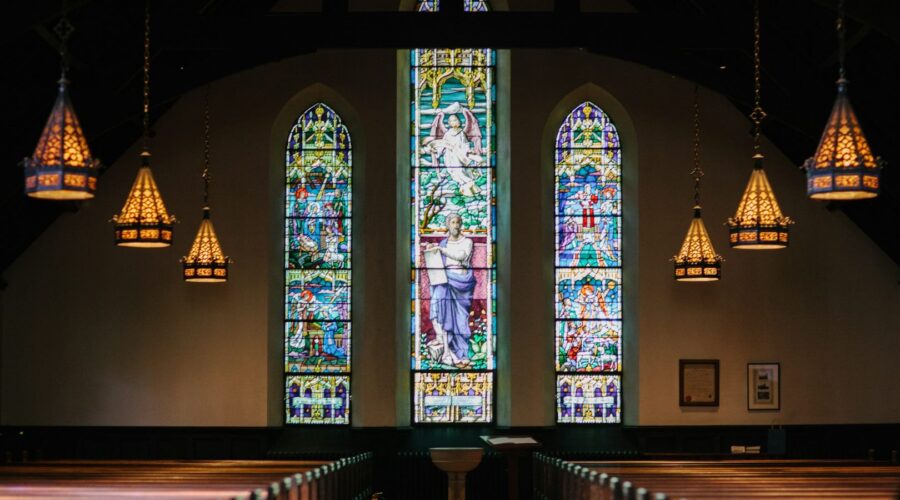
Discover the Profound Meaning and Significance of the Apostles’ Creed Prayer
Introduction
The Apostles’ Creed, a time-honored prayer that has resonated with countless Christians for centuries, serves as a concise and powerful summary of the Christian faith. This blog post delves into the profound meaning and significance of this creed, exploring its origins, key tenets, and lasting impact on the Christian tradition.
Origins and History
The Apostles’ Creed
Although its exact authorship is uncertain, the Apostles’ Creed is believed to have developed over several centuries, with its roots in early baptismal confessions used by the apostles and their followers. The creed gradually evolved and was formalized during the 4th and 5th centuries, becoming a widely accepted statement of Christian beliefs.
Key Tenets and Beliefs
The Creed’s Structure
The Apostles’ Creed consists of 12 concise articles, each articulating a fundamental aspect of Christian belief:
- I believe in God the Father Almighty,
- Creator of heaven and earth,
- And in Jesus Christ, his only Son, our Lord;
- Who was conceived by the Holy Spirit,
- Born of the Virgin Mary;
- Suffered under Pontius Pilate,
- Was crucified, died, and buried;
- He descended into hell;
- The third day he rose again from the dead;
- He ascended into heaven,
- And sits at the right hand of God the Father Almighty;
- From thence he shall come to judge the living and the dead.
Central Beliefs
The creed affirms a belief in the Trinity (God the Father, Jesus Christ the Son, and the Holy Spirit), the incarnation of God in Jesus Christ, his crucifixion, resurrection, and ascension, and his future return in judgment.
Significance and Impact
A Unifying Statement
The Apostles’ Creed has played a crucial role in uniting Christians across denominations and centuries. Its clear and concise language has made it a common ground for believers of diverse backgrounds, providing a shared expression of their faith.
A Guide for Living
Beyond its doctrinal significance, the creed also serves as a guide for Christian living. Its articles provide a framework for understanding the nature of God, the purpose of humanity, and the path to salvation. By praying or reciting the creed, believers can reflect on the core truths of their faith and align their lives accordingly.
A Source of Comfort
The Apostles’ Creed has offered solace and inspiration to countless Christians throughout history. Its affirmations of God’s power, love, and the hope of resurrection provide comfort in times of trial and uncertainty.
Prayer and Recitation
In Worship Services
The Apostles’ Creed is commonly used in Christian worship services as a declaration of faith and a time for communal reflection. It is often recited or sung following the reading of scripture or during the liturgy.
Personal Meditation
Beyond its liturgical use, the Apostles’ Creed can be prayed or meditated upon privately as a means of personal devotion and spiritual growth. By focusing on the words of the creed, believers can deepen their understanding of their faith and strengthen their relationship with God.
Conclusion
The Apostles’ Creed stands as a timeless and powerful affirmation of the Christian faith. Its concise articles encapsulate the core beliefs of Christianity, providing a unifying statement, a guide for living, and a source of comfort for believers throughout the ages. Whether recited in worship, meditated upon in private, or used in teaching, the Apostles’ Creed continues to inspire, strengthen, and unite Christians worldwide.
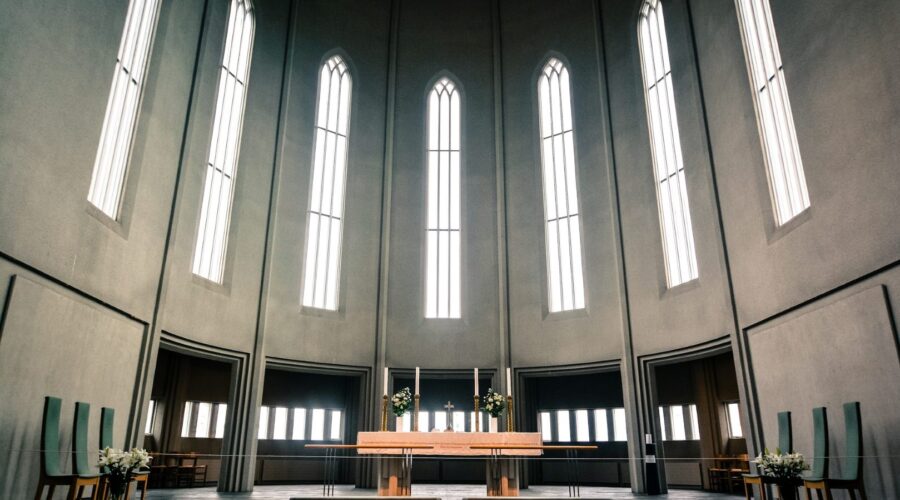
Find Your Churchome: A Comprehensive Guide to Discovering Your Spiritual Home
Introduction
Finding a church home is a significant decision in one’s spiritual journey. It’s a place where we can connect with like-minded individuals, deepen our faith, and serve our community. This guide aims to provide comprehensive insights and practical tips to help you navigate the search for the perfect churchome.
Self-Reflection and Exploration
Assess Your Needs and Values
Before embarking on the search, it’s crucial to introspect and identify your spiritual needs and values. Consider what you’re looking for in a church, such as:
- Denominational affiliation
- Worship style (e.g., traditional, contemporary, charismatic)
- Teaching emphasis (e.g., biblical, theological, practical)
- Community involvement and outreach
- Opportunities for personal growth and development
Seek Input from Trusted Sources
Talk to friends, family members, and respected spiritual leaders who know you well. Ask for their recommendations and insights based on your needs.
Research and Exploration
Attend Different Churches
The best way to find a churchome is to visit several different churches. Pay attention to the following aspects:
- The worship experience
- The preaching and teaching style
- The friendliness and welcoming atmosphere
- The opportunities for involvement and service
Explore Online Resources
Use online resources like Google My Business, church websites, and social media to gather information about churches in your area. Read reviews, check out their sermons, and connect with church members online.
Get Involved and Connect
Attend Small Groups or Bible Studies
Small groups and Bible studies provide an excellent opportunity to connect with other members and get a deeper understanding of the church’s culture and community.
Volunteer and Serve
Involving yourself in the church’s ministries or outreach programs is a great way to build relationships and experience the church in action.
Talk to Church Leaders
Don’t hesitate to reach out to pastors, elders, or other church leaders. They can provide insights about the church’s mission, vision, and values, as well as answer any questions you may have.
Making a Decision
Pray and Seek Wisdom
Ultimately, finding your churchome is a matter of prayer and discernment. Take time to reflect on your experiences and seek God’s guidance.
Consider the Long-Term Fit
Don’t just focus on the present moment. Think about where you see yourself in the coming months and years, and whether the church you’re considering aligns with your long-term spiritual goals.
Don’t Be Afraid to Move On
If a church doesn’t meet your needs or expectations after giving it a fair chance, it’s okay to move on and continue searching. Don’t get discouraged, as the perfect churchome for you is out there waiting.
Tips for Finding a Churchome
* Be open-minded: Don’t limit yourself to churches within your current denomination or worship style. Explore different options to find the one that best resonates with you.
* Prioritize community: Look for a church that fosters a sense of belonging and encourages relationships between members.
* Check for a clear mission and vision: The church should have a clear understanding of its purpose and how it plans to fulfill it.
* Consider your family’s needs: If you have children, look for churches with strong children’s programs and support for families.
* Be a guest, not a consumer: Approach your visits as opportunities to connect and learn, rather than just looking for a “perfect fit”.
* Trust your instincts: After visiting different churches, pay attention to how you feel and which one brings you a sense of peace and belonging.
Discover the Enriching Tradition of Catholicism: An In-Depth Guide to Autom Catholicism
Introduction to Autom Catholicism
Autom Catholicism is a unique and ancient form of Christianity that has been practiced for centuries. Its adherents place great emphasis on the role of the Holy Eucharist in the spiritual life and believe in the real presence of Christ in the bread and wine of the sacrament. Autom Catholics are often known for their deep devotion to the Blessed Virgin Mary and the saints.
History and Origins
The origins of Autom Catholicism can be traced back to the early Church. The term “autom” is derived from the Greek word “autos,” meaning “self.” This refers to the belief that Christ is present in the Eucharist “in Himself” or “in His own person.” This teaching has been consistently held by the Church since apostolic times.
Key Beliefs and Practices
Autom Catholicism is characterized by several distinctive beliefs and practices:
1. The Real Presence in the Eucharist
Autom Catholics believe that the bread and wine of the Eucharist are not merely symbols but are actually transformed into the body and blood of Christ. This transformation is known as “transubstantiation.”
2. Devotion to the Blessed Virgin Mary
Autom Catholics have a deep reverence for the Blessed Virgin Mary. They believe that she was conceived without sin and that she is the Mother of God. Mary is often invoked as a mediator and intercessor.
3. Veneration of the Saints
Autom Catholics venerate the saints, believing that they are holy individuals who can intercede with God on behalf of the living. Prayer to the saints is common in Autom Catholic practice.
4. Importance of Sacraments
Autom Catholics highly value the seven sacraments instituted by Christ. These include Baptism, Confirmation, Eucharist, Penance, Anointing of the Sick, Holy Orders, and Marriage.
Autom Catholic Liturgy
Autom Catholic liturgy is rich in symbolism and ritual. The Mass, or celebration of the Eucharist, is the central act of worship. It is typically celebrated in Latin and follows a traditional format. Other liturgical celebrations include the Liturgy of the Hours, which is a series of daily prayers, and the sacraments.
Autom Catholicism Today
Today, Autom Catholicism is practiced by millions of people around the world. It is particularly prevalent in countries with a strong Catholic heritage, such as Italy, Spain, and Mexico. Autom Catholic communities can also be found in many other parts of the globe.
Benefits of Autom Catholicism
Autom Catholicism offers numerous benefits to its adherents, including:
1. Spiritual Fulfillment
Autom Catholicism provides a deep sense of spiritual fulfillment through its emphasis on prayer, meditation, and the sacraments.
2. Community Connection
Autom Catholic communities are often close-knit and provide a sense of belonging and support.
3. Moral Guidance
Autom Catholicism offers moral guidance and direction based on the teachings of Christ and the Church.
4. Eschatological Hope
Autom Catholics believe in the resurrection of the dead and eternal life with God. This provides hope and comfort in the face of suffering and death.
FAQs About Autom Catholicism
Q: What is the difference between Autom Catholicism and other forms of Catholicism?
A: Autom Catholicism emphasizes the real presence of Christ in the Eucharist and places a strong focus on traditional liturgy and devotion to the Blessed Virgin Mary.Q: Are Autom Catholics allowed to marry?
A: Yes, marriage is a sacrament in Autom Catholicism, but it is only valid between baptized Catholics.Q: How do Autom Catholics view other religions?
A: Autom Catholics believe that there is only one true faith, but they respect the beliefs of others and encourage dialogue and understanding.Conclusion
Autom Catholicism is a rich and diverse tradition that has been practiced for centuries. It offers a deep sense of spiritual fulfillment, community connection, and moral guidance to its adherents. While Autom Catholicism may not be for everyone, it continues to be a vibrant and meaningful expression of Christian faith for millions of people around the world.